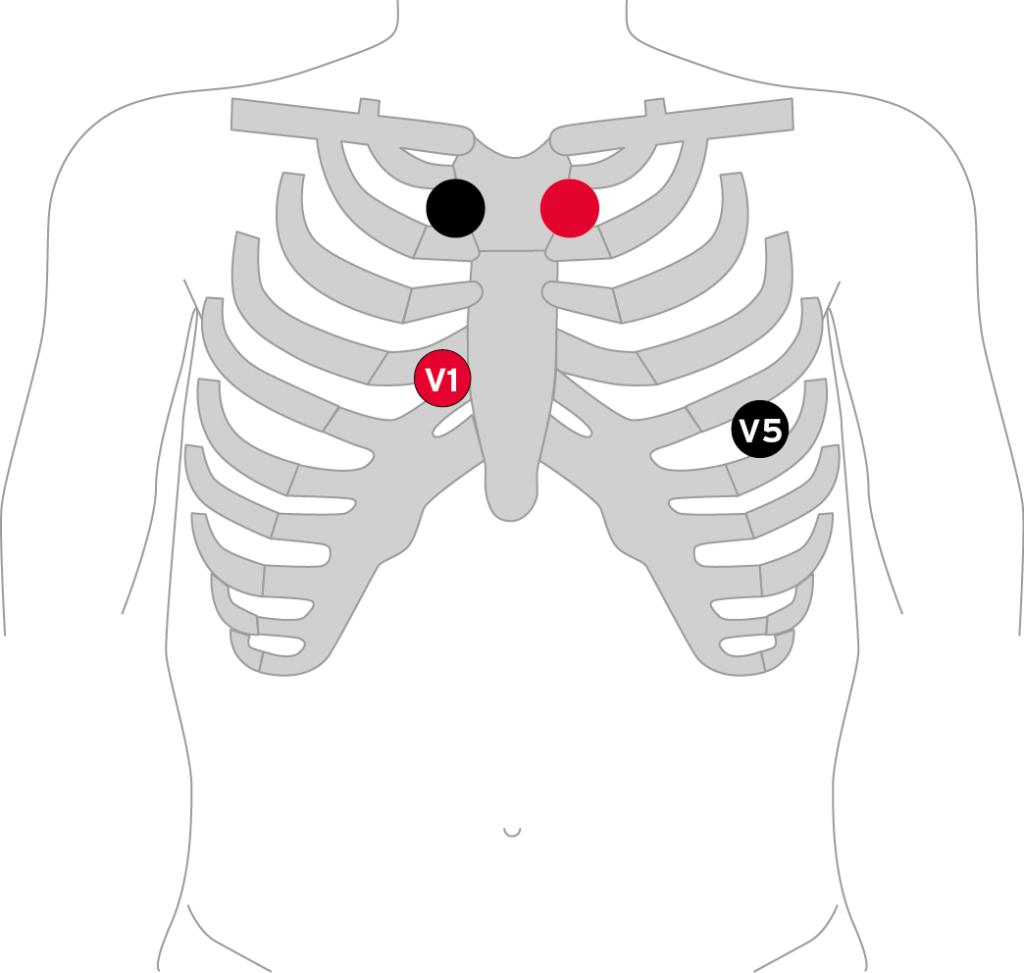Home » Patient
Below you will find frequently asked questions about the functioning of the heart and useful tips about the use of an ECG recorder. For the sake of a reliable examination, it is important that you understand everything and that you follow the advice carefully. Therefore, never hesitate to approach your doctor, family doctor or assistant with any questions you may have.
The heart is a large muscle which consists of four hollow spaces. The top two cavities in the heart are called atria and the bottom two, chambers. The regular contraction of the atria and chambers causes the blood to be pumped around the body. The blood supplies muscles and organs with oxygen and nutrients. The heart consists of heart muscle cells. When these are stimulated electrically, the heart contracts. The electrical stimulus begins in the sinus node (which determines the heart rhythm) and then causes the atria and then the chambers to contract via a conduction system.
An arrhythmia is a recurring deviation from the normal heart rhythm. With each heartbeat, an electrical impulse causes the heart to contract. In a normal heart rhythm, this contraction occurs at a regular rate. If there is something wrong with the formation or conduction of the electrical stimulus, the heart rhythm changes. For example, the heart may beat too fast or too slow. The heartbeat can also become irregular. Untreated arrhythmias can reduce the long-term pumping function of the heart or even lead to cardiac arrest. However, they are usually quite harmless and/or can be easily treated. The treatment chosen by the physician depends among other things on the patient's age and on the cause and severity of the disorder.
An ECG recorder is a portable medical device that records your heart rhythm over a longer period of time (a few days or weeks). We call such a recording an electrocardiogram (ECG). Your doctor has asked for this examination because it provides important information about the functioning of your heart.
The heart muscle cells are electrically charged, so the heart as a whole generates an electric field. The ECG is a graphic representation of the changes in that field during the contraction and relaxation of the heart. Since the electrical impulse travels through the heart in a gradual manner via a conduction system, the size and direction of the electrical field changes continuously.
De arts of assistent brengt zogenaamde huidelektroden op uw borst aan. Deze worden vervolgens met dunne kabels verbonden aan de ECG-recorder. Terwijl u de ECG-recorder draagt, houdt u in het patiëntendagboek bij welke klachten u ervaart en activiteiten u onderneemt. De recorder is niet waterdicht. U kunt tijdens het onderzoek dus niet douchen, baden of zwemmen. Alleen wassen met een washand. Als u de recorder langere tijd moet dragen, krijgt u een aantal sets huidelektroden mee en een instructie hoe deze opnieuw te bevestigen na het douchen.
No, unfortunately you should take off the electrodes and keep the recorder away from water. The sensitive electronics are not water resistant.
You can take a picture of yourself in front of the mirror and then replace the electrodes according to that picture or put a small dot with a pen in the middle above the electrode and replace the electrodes there. Please note the time of electrode replacement in the diary. Click on this link for an example of where to place the electrodes.
Questions about your examination?
Voor de betrouwbaarheid van het onderzoek is het belangrijk dat u alles begrijpt en de adviezen nauwkeurig opvolgt. Sommige mensen helpt het om een bekende mee te nemen die meekijkt bij het aansluiten van de ECG-recorder. Die kan u bijvoorbeeld helpen als u de elektroden aanbrengt.
